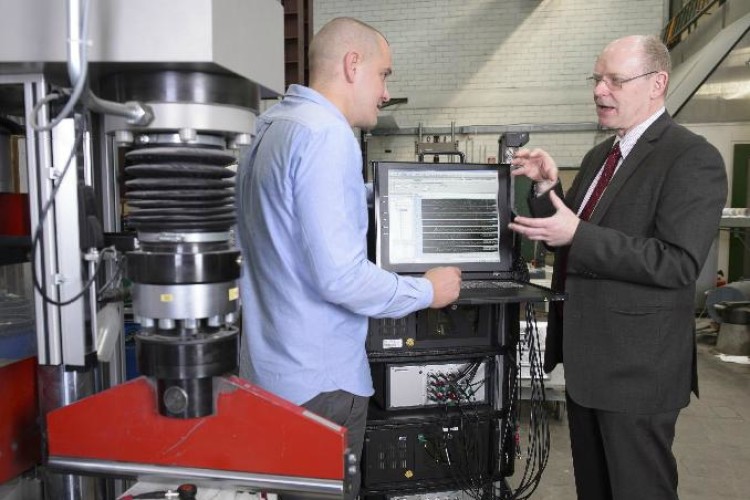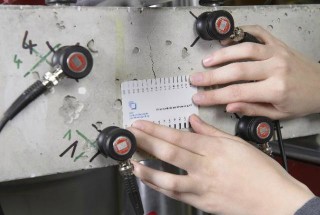A session at the annual meeting of the American Association for the Advancement of Science (AAAS) heard about international research to examine three different self-healing mechanisms for concrete and test the results.
Professor Christian Grosse, who is the chair of non-destructive testing (NDT) at the Technical University of Munich (TUM), was among the speakers who discussed materials for sustainable infrastructure during the AAAS conference last week. The other speakers at the conference session were Mo Li of the University of Houston, who spoke about sustainable infrastructure materials with repeatable self-healing capacity, and Erik Schlangen, Delft University of Technology whose presentation was on self-healing concrete (with bacteria) and self-healing asphalt (with steel wool).
Grosse explained that the cracks do not usually pose any direct threat to the stability of structures: "However, water and salts can penetrate the concrete and damage the affected components. In the EU research project HealCON, an international team of researchers is working toward the development of concrete that can repair itself. The scientists are examining three different self-healing mechanisms.
- Bacteria as mini construction workers: Certain bacteria produce calcium carbonate as a metabolic product. The scientists soak balls of clay with the spores of these bacteria and mix the balls into concrete. Once water penetrates the concrete, the microorganisms become active and release calcium carbonate, one of the main components of concrete. "The bacteria can close cracks of up to a few millimeters in width in a matter of a few days," said Grosse.
- Hydrogels as gap fillers: Hydrogels are polymers that absorb moisture. They are used in nappies, among other things. Materials containing hydrogels can expand to ten or even 100 times their original size. Cracks that form in concrete can be healed by a hydrogel that expands when it comes into contact with moisture, thus preventing the water from penetrating further without expanding the cracks.
- Greater strength thanks to epoxy resin: Epoxy resins or polyurethane can be encapsulated and mixed into the concrete. When the concrete cracks, the capsules break open and the polymer is released. It forms a hard mass that seals the crack. It also has a positive side-effect: It increases structural stability.
Grosse and his colleagues specialise in testing how well these healing agents work in individual cases. They use non-destructive testing methods to do this, for example acoustic emission technology. Pressure is exerted on a concrete block that contains one of the healing agents. When the concrete cracks, acoustic waves are generated, which are measured using sensors. By means of the measurement data, the scientists not only can establish that cracks have formed but also can determine precisely where.

Following the healing process, the researchers carry out the experiment again. If the healing process was not successful, there are few new acoustic waves, as the cracks are still there. If the cracks have been filled, new ones arise – but in different places. "The localisation of the crack-sounds clearly indicates whether a remedy works or not," explains Grosse.
Promising results have already been obtained from experiments carried out under laboratory conditions. The next stage will involve the use of the self-healing material in actual building components for sections of bridges or tunnel. After this, the technologies will have to be adapted for use in standard concrete production and construction methods.
The HealCON project is being funded as part of the European Union’s 7th Framework Programme for Research and Technological Development. The project is coordinated by Ghent University in Belgium.
Got a story? Email news@theconstructionindex.co.uk




